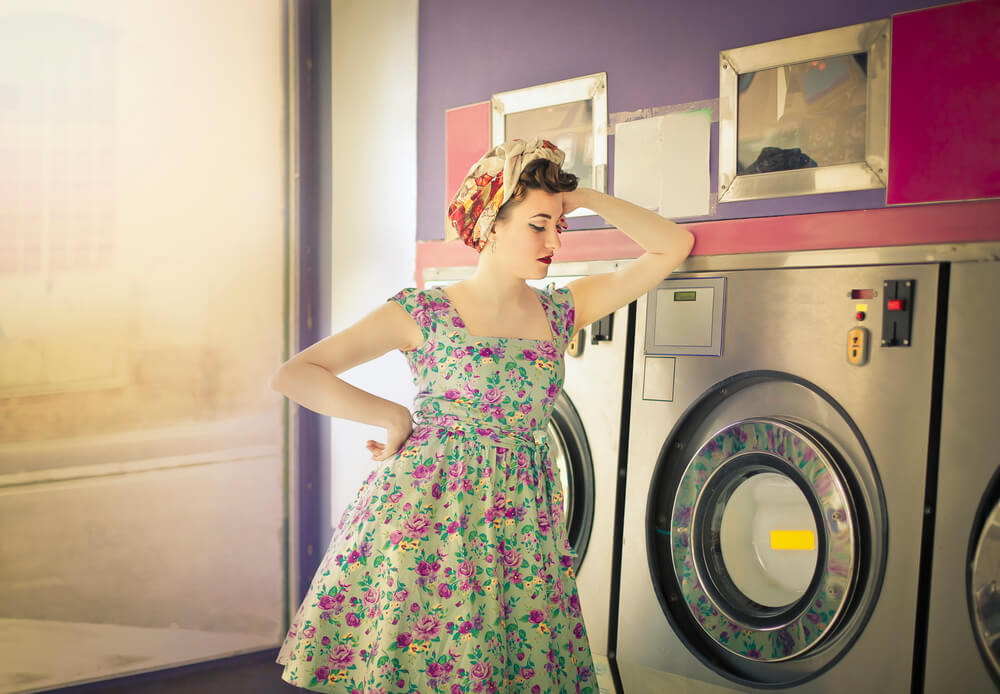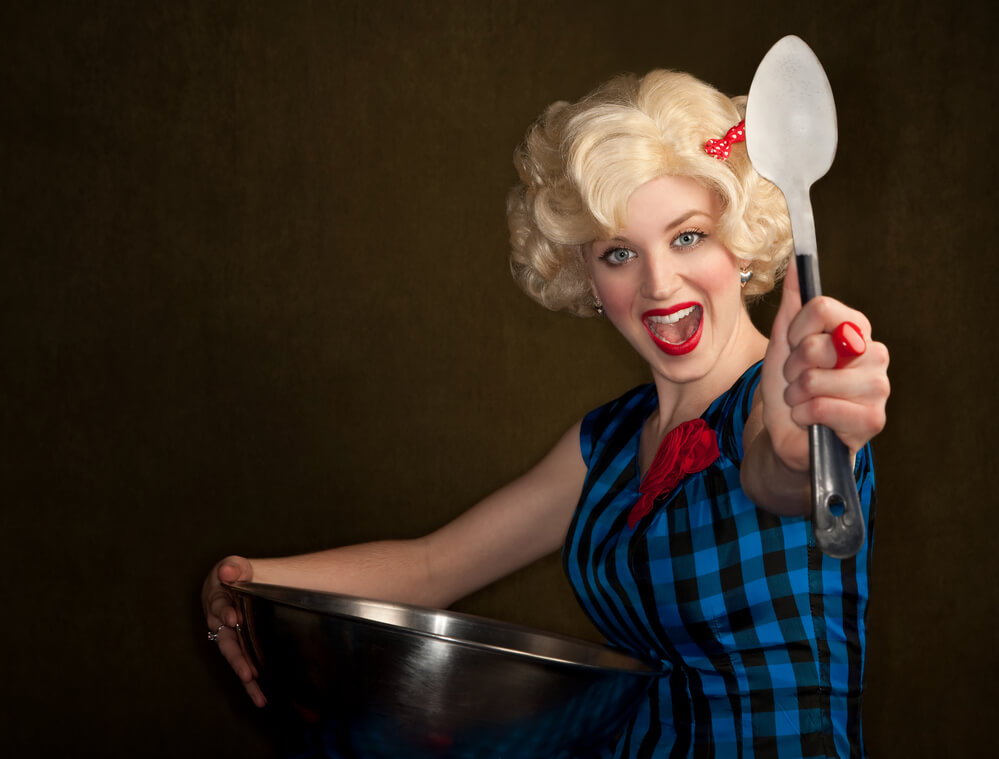Why do Americans have such a strange image
'04.11.2018'
Source: Gossip
Watching films such as Stepford Wives, Desperate Housewives (Marcia Cross), Mona Lisa Smile (Kirsten Dunst's character), I noticed the characterization of the ideal American housewife, and I wondered where this image came from.

“Women have been doing household chores for centuries and even millennia - and this was not surprising. But it is all the more surprising that one day the moment came when the image of a woman doing housework became a fashionable icon, the blogger quotes Gossip.
Born of revolution
This happened together with the birth of the bourgeois formation - in the XVII century, in Holland - the first bourgeois country in history. The image of a housewife is generally one of the most bourgeois in history, it can be called the personification of the main bourgeois values - stability, order, family well-being. In this case, in no case is it a maid who is forced to work in someone else's house and household in order to earn her bread. No - it's about the owner of the house.
The Dutch burgher is the first prototype. She could be rich enough to dress up in diamonds and pearls. But, unlike their contemporaries somewhere in France or Spain, the Dutch Huisvrouw, like those depicted in the paintings of Peter de Hoch and Gabriela Mets, did not wear her fortune - and this was what distinguished the bourgeois image from the aristocratic. A wealthy Dutch housewife takes care of the house, so she wears a dark dress and adorns herself with a white lace collar.
The media, cinema and especially advertising at this time are very actively promoting the image of a woman housewife, and it really becomes trendy. One of the clearest examples of this image is the former Hollywood star Alice Fay. She bade farewell to the screen at the end of 40, married, had two children and became the ideal of American Housewife - and now the audience was watching her not on movie screens, but in the pages of lifestyle magazines. There, Madame Fay demonstrated the ideal that every American woman had to create in her life.
The image is also replicated by numerous commercials, which themselves begin to form as a genre with the advent of television. From now on, soap operas and commercials appear in each family, which multiply this image in geometric progression.
Flowers, cells, peas
And what are the visual features of this image? Like its Dutch predecessor, the 50's American housewife is by no means an unruly creature in a cotton robe and terry socks. This woman is well-groomed and sexually attractive for her husband and others: her waist is pulled into an elastic corset, she is in high heels, in a home dress a la Dior, with an elegant hairstyle, sensual make-up and an immaculate white-toothed smile. Attributes associated with the house are also obligatory: a floral fabric, polka dots or a checkered pattern, a neat white collar and lace trim on the apron (ribbons and bows are also allowed).
This set of visual features very quickly becomes a classic: refrigerators, laundry detergents and everything you need for your home advertise clotly lovely ladies with perfect styling and a snow-white apron with ruches on the edges of a checkered home dress similar to each other. They are always in a good mood, they never get tired and are not sullen or thoughtful. Flawlessly washed clothes and a new food processor can make them truly happy. Their hobbies are handicrafts and flower growing, favorite literature is cookbooks and “Goods by Mail” catalogs, and their main talent is saving.
Feminism is against!
But ... In the 60s, the feminist movement begins to intensify, and the image of Ideal American Housewife becomes the main target for its attacks. The image of a housewife, perfect, “licked” and brought to the grotesque in her perfection, becomes in the minds of progressive women a synonym for conservatism and bigotry. Attempt to return to Victorianism, "having conserved" a woman in this artificially created image, failed.
By the 1970 years, this image becomes not just old-fashioned, but reactionary. None of the young women who keep up with the progress will not imitate him, because he is associated with retrograde. In 80, when in America a woman not only wins the right to work on a par with men, but also to receive sufficient material rewards, the image of a lady in a polka-dot dress welcoming her husband returning from work with a standard exclamation “Honey!” Is perceived only comically. Image Housewife disappears - as it seemed, forever ...
It should be noted that in the Soviet Union, ahead of the whole world in the ideas of feminism and emancipation, the cult of the housewife was never prevalent. A woman on a tractor or in an airplane, a policeman or production manager was more popular than a woman at the stove. Because the housewife is a woman who is not engaged in social life, which in the USSR, as I recall, was not encouraged.
Therefore, in the Soviet cinema, this image appears in a completely different version: in the comic version, in the image of a woman mired in petty bourgeois life. The most vivid examples are Nina Grebeshkova in “The Diamond Arm”, Raisa Ryazanova in “Moscow Doesn't Believe in Tears” or Svetlana Nemolyaeva in “Office Romance” and “Garage”. And their main difference from Western prototypes is the complete lack of sex appeal: instead of high heels, tight-fitting home dress and elegant makeup, worn sneakers, a shapeless robe “in terrible rosettes” and a tired face without a hint of makeup. This is how the image of a “Soviet housewife” is formed: if she has devoted herself to life and family, society will not find anything interesting in her. Much more interesting woman active.

РўСЂР ° РґРЁС † RyoRё Ryo современность
However, let us return to the history of this image in the Western world. Having been fed up with emancipation, at the beginning of the 1990s, the new generation begins to gradually return to traditional values. And although it was, of course, impossible to return the idealized American Housewife 50's, the image of the new housewife again takes its place in the series and especially in advertising.
He certainly has changed: a housewife at the turn of the XX and XXI centuries is no longer fixated on the house. Her image becomes more minimalistic, dynamic, sporty. Today, in advertisements of household appliances, children's goods, cleaning products, an active and successful woman appears who has put on comfortable jeans and a bright sports jersey in order to quickly clean up the house with the help of modern equipment and re-engage herself and her career. A typical example is the popular American TV series “Desperate Housewives”, which appeared partly as a sequel, and partly as the answer “Sex in a big city”. His heroines are no longer "peas" in polka dots and pies, but resemble the same feminist-minded bitch-bells from the "Big City".
But the image of the Housewife of the middle of the last century did not die completely. The bygone era created it so visually polished and associatively perfect that it became a kind of icon for numerous stylizations and imitations. Therefore, filmmakers and advertisements very often resort to it as a certain retro cliche. One of the most striking contemporary examples is the film “Stepford Wives” with Nicole Kidman and Bette Midler in the lead roles. In it, of course, the image is presented in a very comical and grotesque version, but its features are very accurately copied from the 50-s of the last century.
Yes, the image of a housewife is still alive. It is relevant if only because there is a corresponding social layer, but the visual content of the image changes along with the internal transformations of the representatives of this layer. However, if any of them wishes to visualize the image of a caring and happy housewife, she invariably turns to the good old fifties.







